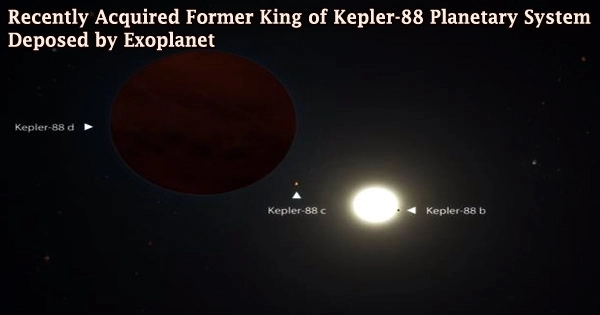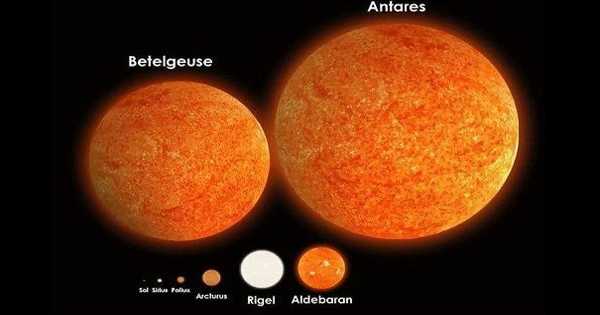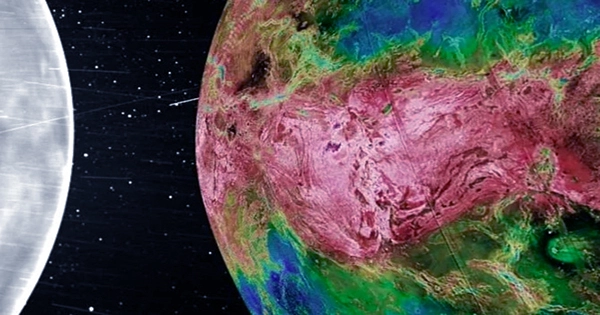King of our solar system. The planet Jupiter, which bears the name of the most potent deity in the Greek pantheon, has dominated the other planets due to its gravitational pull. The slightest movement of Jupiter, which has a mass 300 times greater than Earth and twice that of Saturn, is felt by every other planet.
The asteroid belt, the diminutive size of Mars, and the series of comets that brought water to the infant Earth are all attributed to Jupiter.
Do other planetary systems have gravitational gods like Jupiter?
In a far-off planetary system, astronomers led by the University of Hawaii Institute for Astronomy (UH IfA) have found a planet with a mass three times that of Jupiter.
The discovery is supported by data collected over a six-year period at Hawaii’s Maunakea’s W. M. Keck Observatory. Using the High-Resolution Echelle Spectrometer (HIRES) instrument on the 10-meter Keck I telescope, the team confirmed that the planet, named Kepler-88 d, orbits its star every four years, and its orbit is not circular, but elliptical. At three times the mass of Jupiter, Kepler-88 d is the most massive planet in this system.
Two planets in the Kepler-88 system, Kepler-88 b and c (planets are typically named alphabetically in the order of their discovery), which orbit much closer to the star, have already made the system famous among astronomers.
At three times the mass of Jupiter, Kepler-88 d has likely been even more influential in the history of the Kepler-88 system than the so-called King, Kepler-88 c, which is only one Jupiter mass.
Dr. Lauren Weiss
Mean motion resonance, a peculiar and stunning dynamic, exists between those two planets. The orbital period of planet c, a Jupiter-mass planet, is 22 days, while planet b, a planet of sub-Neptune size, circled the star in merely 11 days. Their orbits, which resemble a clockwork, are as energy-efficient as a parent pulling a child on a swing.
Planet B is pumped after every two orbits the planet makes of the star. Due to the force of the outer planet, Kepler-88 c, which is 20 times more massive than planet b, the inner planet’s orbital timing is dramatically altered.
The NASA Kepler space telescope allowed astronomers to precisely clock when Kepler-88 b crossed in front of the telescope, allowing them to see these variations in transit timing.
Although transit timing variations (TTVs for short) have been detected in a few dozen planetary systems, Kepler-88 b has some of the largest timing variations. With transits arriving up to half a day early or late, the system is known as “the King of TTVs.”
The recently discovered planet gives astronomers a unique perspective on the system.
“At three times the mass of Jupiter, Kepler-88 d has likely been even more influential in the history of the Kepler-88 system than the so-called King, Kepler-88 c, which is only one Jupiter mass,” says Dr. Lauren Weiss, Beatrice Watson Parrent Postdoctoral Fellow at UH IfA and lead author on the discovery team. “So maybe Kepler-88 d is the new supreme monarch of this planetary empire the empress.”
These extrasolar sovereign heads of state may have had an impact on our solar system comparable to Jupiter’s. These planets may have encouraged the formation of rocky planets and guided comets carrying water in their direction.
Dr. Weiss and colleagues are searching for similar royal planets in other planetary systems with small planets.
















